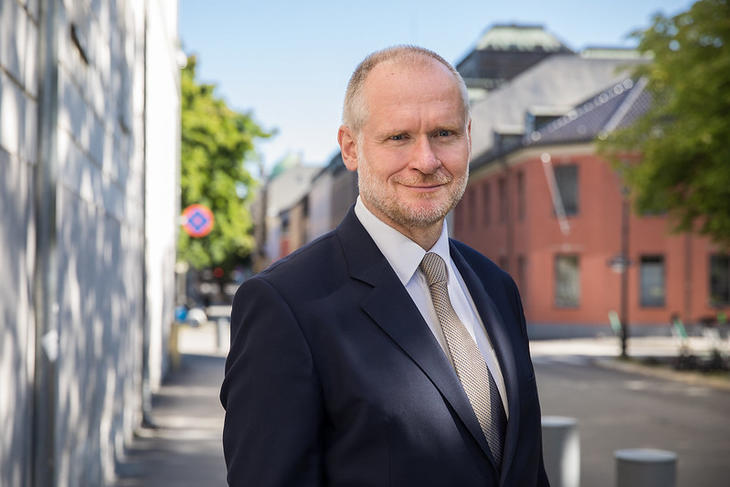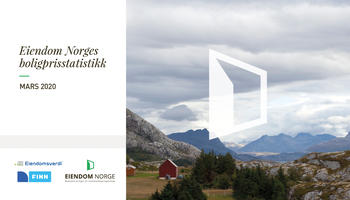
Decline in house prices in December
House prices fell by 0.9 per cent in December 2023. Adjusted for seasonal variations, house prices rose by 0.2 per cent.
In 2023, housing prices in Norway will rise by 0.5 per cent.
The average price for a home in Norway was NOK 4,218,068 at the end of December.
- House prices fell 0.9 per cent in December, which resulted in a slight increase of 0.2 per cent seasonally adjusted. 2023 will thus end, as we forecast last month, with a slight rise of 0.5 per cent. With a growth in consumer prices in 2023 of between 4 and 5 per cent, this means that housing has actually become cheaper, says managing director Henning Lauridsen of Eiendom Norge.
- Almost as many homes have been sold both in December and in 2023 combined as in 2022. The second-hand housing market is strikingly stable despite the moderate price development, says Lauridsen.
- Just before Christmas we presented our forecast for house prices this year and we expect a good growth of 4 per cent through 2024. This means that this year we will also experience the so-called January effect in the housing market with a strong rise in house prices in the first month of the year. We think it will take a lot to shake this pattern, he says.
Good activity and decline in unsold
In December, 3,018 homes were sold in Norway, which is 0.5 percent fewer than the corresponding month in 2022.
In 2023, 90,732 homes were sold in Norway, which is 0.8 percent fewer than in 2022.
In December, 3,199 homes were put up for sale in Norway, which is 2.7 percent fewer than in the same month in 2022.
In 2023, 103,623 homes were listed for sale in Norway, which is 0.8 per cent more than in 2022.
- Turnover in the second-hand housing market in 2023 ended at the level of 2022 and the volumes are the same as the years before the pandemic. The pandemic years 2020 and 2021 stand out markedly with a significantly higher turnover in the second-hand housing market, says Lauridsen.
- Throughout December, there has also been a fall in the number of unsold properties on the market, and we will not enter 2024 with an abnormally large supply side, he says.
It took an average of 62 days to sell a home in December, up from 49 days in November. Stavanger and surrounding area had the shortest sales time of 34 days. Tromsø had the longest sales time with 111 days.
Housing investments will lower interest rates
Asker and Bærum had the strongest seasonally adjusted price development in December, where prices rose by 2 per cent.
Hamar/m Stange had the weakest seasonally adjusted price development, with a seasonally adjusted decrease of 0.2 per cent.
The strongest development in 2023 is in Stavanger and surroundings and Kristiansand, with an increase of 5.4 and 5.3 per cent.
Porsgrunn/Skien has the weakest development in 2023 with minus 3.4 per cent, followed by Bodø w/Fauske and Tromsø with decreases of 3.2 and 2.9 per cent.
- The housing price development in Stavanger and Kristiansand stands out significantly from the rest of the country, and Agder and Rogaland are the only areas in Norway that may see a small rise in real estate prices in 2023, says Lauridsen.
- Our major concern going forward is not related to the second-hand housing market, but to the new housing market. We will only see the consequences of the sales failure in the new housing market in 2025 and 2026, when historically few new homes will be completed in Norway.
- Our assessment is that Norges Bank has not yet taken into account what is happening in housing construction and what this will mean for the Norwegian economy. There is also an unusually large gap in the estimates for housing investment from Norges Bank and Statistics Norway for the period ahead.
- While before Christmas Statistics Norway presented a forecast of -16.2 per cent in 2024, Norges Bank expects a fall of 6.4 per cent. In our view, Statistics Norway's forecast is closer to reality, and we believe that Norges Bank will have to reassess both its forecast and interest rate path. They will probably have to lower the interest rate already in March, concludes Lauridsen.






